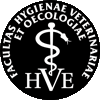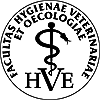Control questions
- What are the parts of a light microscope?
- What belong to optical, illumination and mechanical parts of a light microscope?
- What types of objectives do we have?
- What are the characteristic features of objectives?
- How do the characteristics of objectives change depending on magnification?
- What is the total magnification of light microscope?
- What is penetration ability of light microscope?
- What we need for phase contrast microscopy?
- Why do we use phase objective?
- How can we measure the size of microscopic object?
- What is the micrometric coefficient?
- Why do we use eyepiece and objective micrometer?
- How can we measure the thickness of microscopic object?
- What do we use for Panoptic staining (after Pappenheim) of blood smear?
- What is the difference between avian and mammalian erythrocyte?
- Which types of vacuoles is possible to observe in ciliates?
- How can we stain the food vacuoles?
- What is the size of prokaryotic and eukaryotic cell?
- Why do we use Gramm-staining?
- What is the procedure of Gramm-staining?
- What are differences between G+ and G- bacteria?
- What do we use for proof of starch?
- Why do we use Lugol solution?
- What is the shape of starch grain?
- What is amylase and what is its function?
- How can we proof amylase?
- What do we use for proof of lipids in cell?
- What types of inclusions are lipid vacuoles and starch grains?
- Why do we use Heller assay?
- What do we use for proof of proteins?
- What do we use for proof of DNA in nucleus?
- What belongs to non-cellular life?
- What is chemical composition of viruses, prions, viroids and virusoids?
- Name the example of viral and prions disease
- What is the size of viruses?
- What do you know about viral reproduction in host cell?
- What is the difference between lytic and lysogenic cycle?
- Describe gene expression in viruses depending on the type of nucleic acid?
- What types of electron microscopes do we have?
- What is the difference between light and electron microscope?
- What is the difference between transmission and scanning electron microscope?
- What is total magnification and resolution of electron microscope?
- What types of modification you must do before using electron microscope?
- What are the differences between prokaryotic and eukaryotic cell?
- What belongs to crystalline inclusions?
- What belongs to pigment inclusions?
- What are differences between raphids, styloids and druses?
- What is anthocyanine and what is its function?
- How is changed color of anthocyanines in berries according to pH?
- What is the shape of nuclei of leucocytes?
- What types and number of nuclei are typical for Paramecium?
- What type of staining is used for Golgi aparatus and mitochondrion provement?
- Where in the cell are mitochondria localized?
- How and under what conditions are cells cultivated in vitro?
- What are differences between adherent and suspension cells?
- How do we passage the cells in vitro?
- What are the phases of growth curve of a tissue culture?
- What microscope is used for observation of cell cultures?
- What legislation is used for animal protection?
- What is the difference between breeding, supplying and user establishments?
- How must be equipped user establishments?
- What is the difference between germ-free, gnotobiotic, SPF and conventional animals?
- Who can perform experiments on animals?
- What is an integral part of the experiment?
- What are the reasons for experiments?
- What are "3Rs" principles for the use of animals in experiments?
- What documentation should be kept during animal experiments?
- What is osmosis?
- What are the types of solutions important for osmosis?
- What happens with the cell in hypotonic, isotonic and hypertonic environment (what is the difference between plant and animal cell)?
- What is plasmolysis, plasmoptysis, plasmorhisis and turgor?
- What is haemolysis?
- How looks haemolysis macroscopically and microscopically?
- What types of transport of substances through the membrane do you know?
- What is the difference between endocytosis, exocytosis, pinocytosis and phagocytosis?
- How can we calculate phagocytic activity?
- What are the phases of the cell cycle and what happens in each phases?
- What are the phases of the mitosis and what happens in each phases?
- What is the difference in cytokinesis of plant and animal cells?
- What types of mitotic disorders do we have?
- How can we calculate mitotic index?
- What is the difference between mitosis and meiosis?
- What are the phases of the meiosis?
- What is the course of spermiogenesis and its phases?
- What is the course of oogenesis and its phases?
- What is difference between sexual and asexual reproduction?
- What is difference between perfect and imperfect metamorphosis?
- What is difference between ontogenesis and phylogenesis?
- What is apomixis?
- How to recognize microscopically phases of estral cycle?
- What types of movement do we have?
- What cytoskeletal fiber and molecular motor is involved in various types of movements?
- What do you know about muscle contraction?
- What is chemotaxis and oxygenotaxis?
- What kind of stress do we have?
- What might be effect of the stress?
- What is photodynamy and oligodynamy?
- What is photodynamic colour and its effect?
- What is phytoncide and its effect?
- What is the effect of ionizing radiation on the rat testis?
- What is the chemical composition of chromosome?
- What types of chromosomes according to centromere position do we have?
- What is the number of chromosomes in somatic and sex cell?
- What is sex determination system?
- What is sex chromatin?
- What is polytene chromosome?
- What are the karyotypes of domestic animals?
- What is cell cycle of Drosophila melanogaster?
- What mutations are typical for Drosophila melanogaster?
- Can you explain terms gene, genome, genotype and phenotype?
- What is difference between trait and phenotype?
- Can you explain terms homozygote, heterozygote and hemizygote?
- What is difference between complete, incomplete dominance and codominance?
- What does belong to Mendelian inheritance?
- Can you name Mendel's principles and conditions to hold these principles true?
- Why do we use ?2 test?
- What belongs to gene interactions?
- What is true for each gene interactions and what are the ratios in the F2 generation?
- What is difference between sex-linked, sex-limited, sex-influenced and sex-controlled inheritance?
- What is difference between complete and incomplete sex-linked traits?
- What are Morgan's principles?
- What is difference between complete and incomplete linkage?
- What is Bateson and Morgan number?
- What is three-point cross and its function?
- What is Hardy-Weinberg equilibrium and the conditions under which this equilibrium applies?
- What is panmictic population?
- Can you name examples of qualitative and quantitative trait?
- Can you graphically express qualitative and quantitative trait?
- What is heritability, its formula and examples?
- What is correlation and formula for correlation coefficient?
- What is difference between positive and negative correlation?
- What belongs to non-mendelian inheritance?
- What is maternal inheritance (examples)?
- What is maternal effect (examples)?
- What does it mean polymorphic genes? Use concrete examples.
- What method is used for determination of blood groups in human?
- What is the principle of agglutination reaction?
- What blood groups exist in human? What genotypes correspond to these blood groups?
- What blood groups exist in cats? What genotypes correspond to these blood groups?
Microscopic technique
Native and permanent preparations
Prokaryotes
Chemical composition of the cell
Viruses and electron microscopy
Eukaryotes
Cell cultures
Animal experiments
Transport of substances, osmosis
Cell growth and reproduction
Movement and irritation
Infuence of surroundings onto bioplasm
Cytogenetics
Genetics
Blood groups, polymorphic genes
Drawing
- ciliate with vacuoles
- starch grain
- avian and mammal erytrocytes
- G+ and G- bacteria
- bacteriophage
- nucleus, ER, GA
- mitochondria, chloroplast
- DNA, tRNA
- druses, raphids, styloids
- neuron
- types of leucocyte nuclei
- membrane (model of fluid mosaic)
- Na/K pump, Ca2+ pump, H+pump
- mitotic spindle
- phases of mitosis as observed in microscope
- scheme of mitosis and meiosis
- scheme of spermiogenesis and oogenesis
- cross section of flegalla and cillia (structure 9+2)
- centrosome
- sarcomere
- phylogenetic tree
- formula of amino acid
- replication fork
- transcription, translation, ribosome
- formula of photosynthesis and cell respiration
- chemiosmotic coupling in mitochondria and chloroplasts
- ratios in gene interactions
- genetic linkage - cis and trans phase, complete and incomplete linkage
- maternal effect
- HW equilibrum - formula
- Heritability- formula


